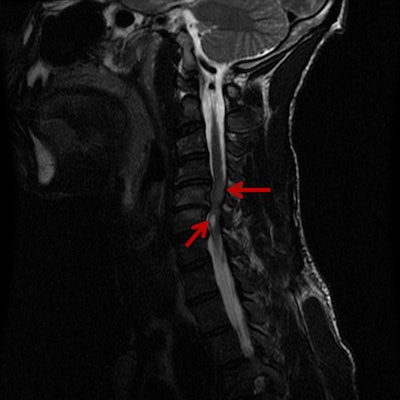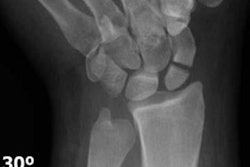
Is the growing popularity of rental bikes in New York City driving an increase in the number of bicycle-related trauma cases being seen in the city's emergency rooms (ERs)? It might, if new information from a hospital that treats people injured in Central Park is any indication.
Researchers from Mount Sinai St. Luke's found an increase in bicycle-related trauma seen in their emergency room from 2014 to 2016 -- a period that corresponds to the mushrooming popularity in the city of rental bikes such as those provided by Citi Bike. Many of the injured are tourists who are riding under the influence and without any protective gear like a helmet, according to Dr. Kishore Chundru, a radiology resident at Mount Sinai West, who presented the data at RSNA 2017.
"When you have inexperienced riders riding bikes, with no protective equipment, on drugs or alcohol, it's just a recipe for disaster," he told AuntMinnie.com.
Rising numbers
The popularity of bicycling has grown rapidly in recent years in New York City, especially since 2000. Fortunately, traffic improvements have kept the number of rider fatalities in the city relatively constant, despite the increased number of riders on the roads. With 2.8 bicyclist deaths per 1 million people, New York City's fatality rate isn't much different from rates for the rest of the state (2.4 deaths per 1 million) and the U.S. (2.7 deaths per 1 million).
But things have begun to change. As a level II trauma center that handles people injured in Central Park, radiologists at Mount Sinai St. Luke's began noticing a growing number of bike-related injuries -- many of them severe, according to Chundru. And emergency staff noticed that many of the victims were riding rental bikes.
"The story was typically that it was a tourist on a rental bike," he said. "Lots of tourists are visiting, they decide to go to Central Park, they may be using alcohol or drugs, and they decide to get a rental bike."
 MRI of a 34-year-old male cyclist who was wearing a helmet. Sagittal T2 image shows high T2 signal throughout the cervical spinal cord consistent with edema. There is cavitary high T2 signal in the spinal cord in addition to the traumatic findings. Image courtesy of Dr. Kishore Chundru.
MRI of a 34-year-old male cyclist who was wearing a helmet. Sagittal T2 image shows high T2 signal throughout the cervical spinal cord consistent with edema. There is cavitary high T2 signal in the spinal cord in addition to the traumatic findings. Image courtesy of Dr. Kishore Chundru.Chundru and colleagues decided to dig deeper into the phenomenon by analyzing data collected from 2014 to 2016 by the trauma surgery department. This included the mechanism and severity of injury, whether the patient was wearing a helmet, blood alcohol content, and toxicity screening results.
They found that both the number and severity of injuries were indeed rising, and the difference was statistically significant. The total number of bicycle injuries rose from 138 cases in 2014 to 169 cases in 2016 -- an increase of 22.5%. The injury severity score (ISS) also rose over the study period, from an average ISS of 4.03 in 2014 to 4.47 in 2016.
| Number, severity of bicycle accidents treated at Mount Sinai St. Luke's | |||
| 2014 | 2015 | 2016 | |
| No. of bicycle accidents | 138 | 122 | 169 |
| Average injury severity score | 4.03 | 4.07 | 4.47 |
While anecdotal evidence points to a connection between the rising rate of injuries and rental bikes, Chundru said the trauma surgery team didn't specifically collect data on the types of bikes being ridden, so the researchers couldn't draw a definitive conclusion.
Another variable that's still unclear is whether there is a connection between injury severity and helmet use. Although bike riders who don't wear helmets frequently present with severe injuries, a very large sample size would be required to demonstrate statistical significance, Chundru said.
Chundru and his team are going to build on their RSNA 2017 presentation by including data collected through the end of 2017 and then submit the resulting paper for publication. He's also working with the trauma surgery team to see if more definitive connections can be drawn between rental bikes and accident rates.
Until then, he noted that the risk could be ameliorated if helmets were available along with the rental bikes.
"Citi Bike is huge in New York, and you don't get a helmet with Citi Bike," he said. "The vast majority of people who rent from them don't wear a helmet. It should at least be an option."




















